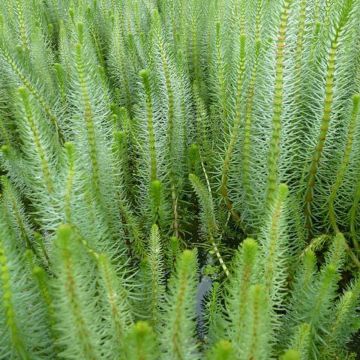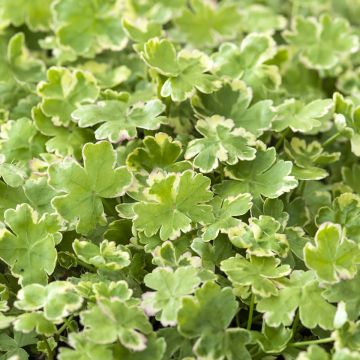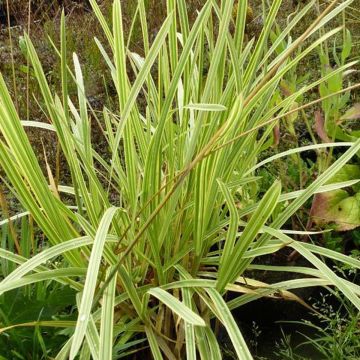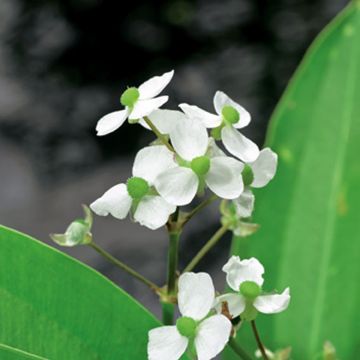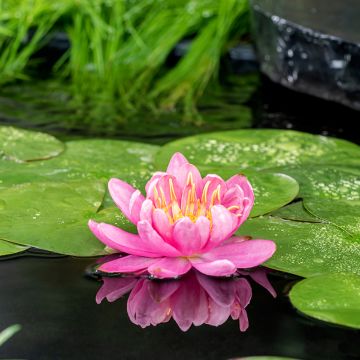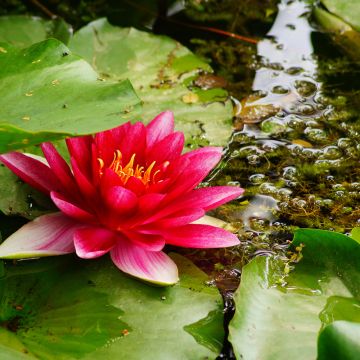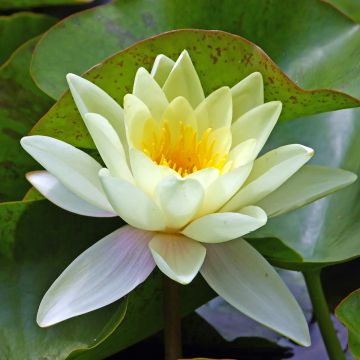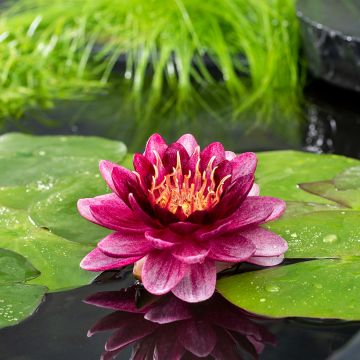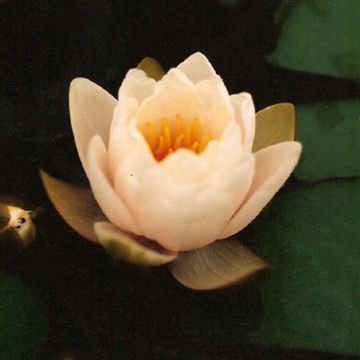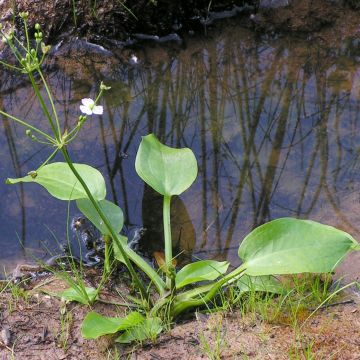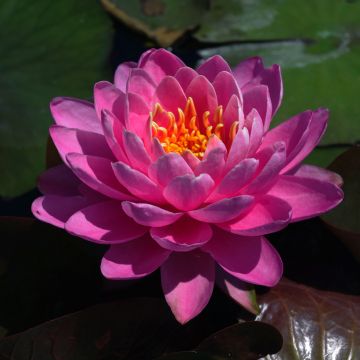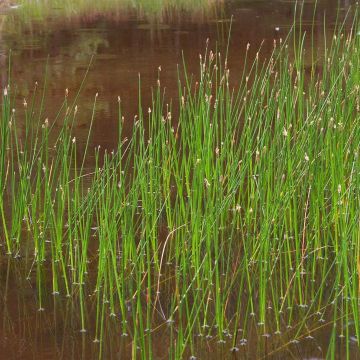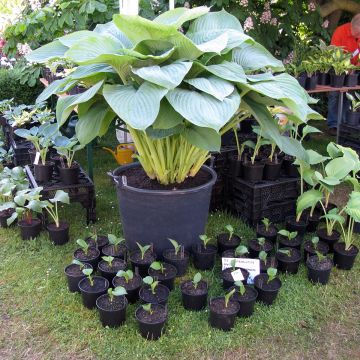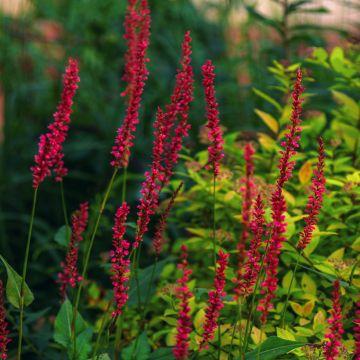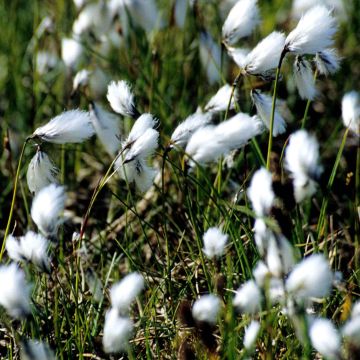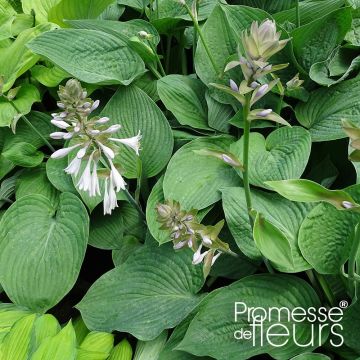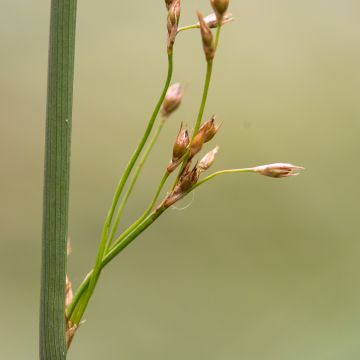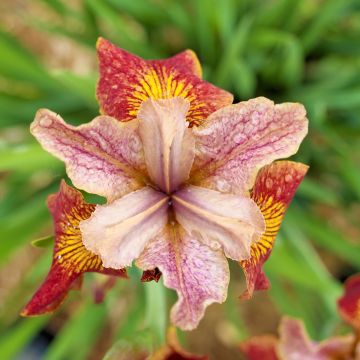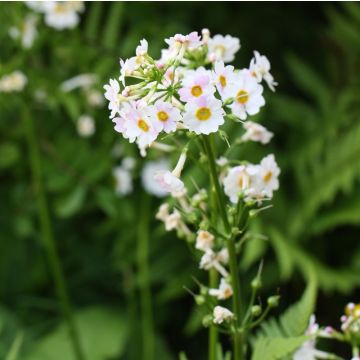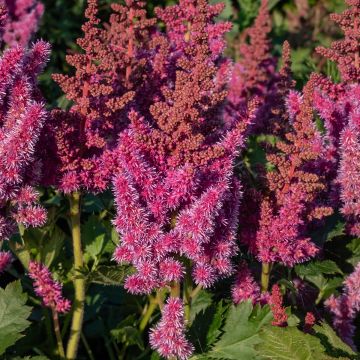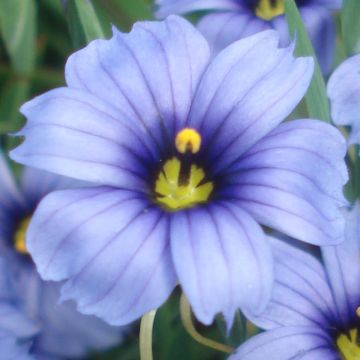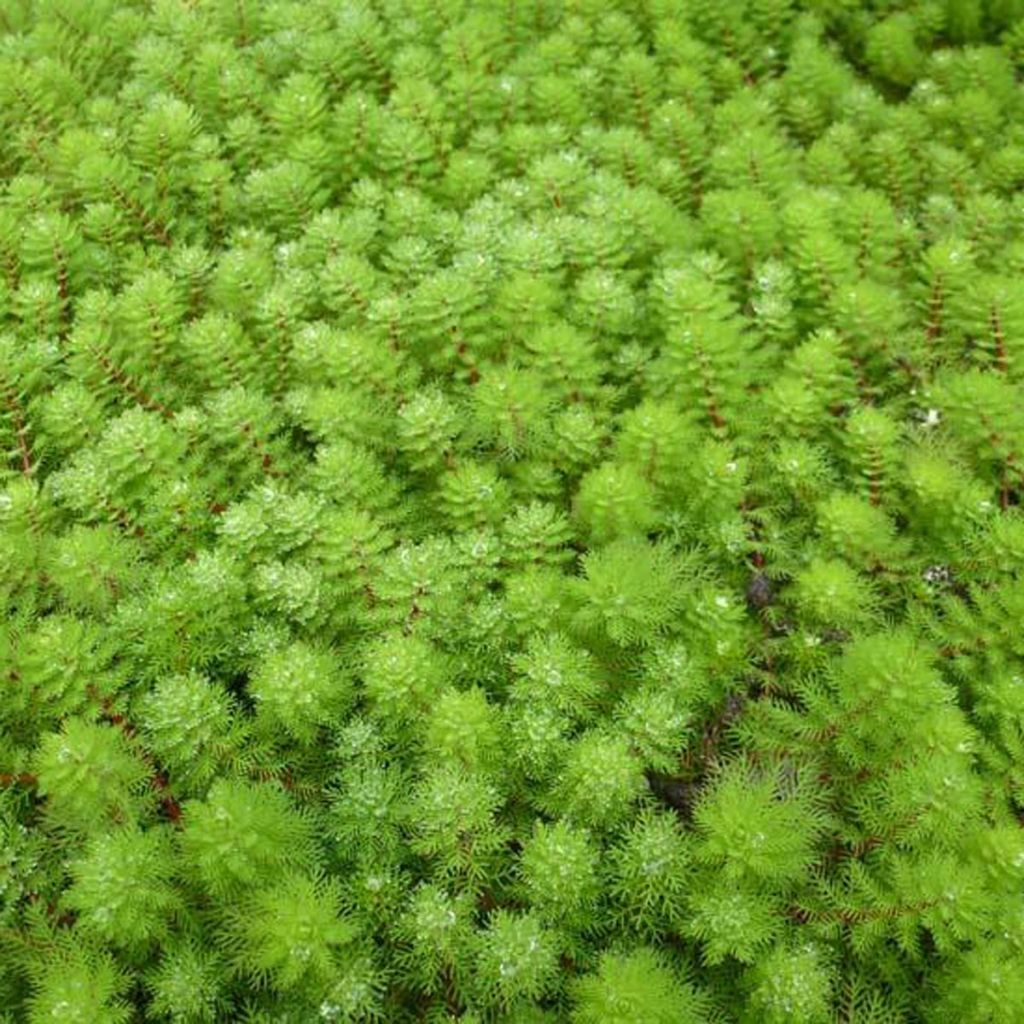

Myriophyllum brasiliense
Myriophyllum brasiliense
Myriophyllum brasiliense
Parrot's Feather, Brazilian Watermilfoil
Attention, myriophyllum aquaticum is PROHIBITED for sale and possession in Europe due to its highly invasive character. European Commission, 01/01/2015
anais, 15/10/2019
Why not try an alternative variety in stock?
View all →This plant carries a 12 months recovery warranty
More information
We guarantee the quality of our plants for a full growing cycle, and will replace at our expense any plant that fails to recover under normal climatic and planting conditions.
Does this plant fit my garden?
Set up your Plantfit profile →
Description
The Myriophyllum brasiliense, also known as Aquatic Myriophyllum, is a partially emergent perennial for temperate ponds, with purifying and highly oxygenating properties. Its long, knotted stems emerge from the water, sometimes reaching up to 40 cm (16in) above the surface. The feathery leaves are finely divided, with a bluish-green hue above water and turning reddish in autumn. Insignificant summer flowering. This trailing plant is highly appreciated by fish and other animals inhabiting ponds.
Myriophyllum aquaticum belongs to the Haloragidaceae family. It is native to Australia, New Zealand, and South America. It now proliferates worldwide in stagnant or slow-flowing freshwater. It forms tall, knotted stems that can reach 1.80 m (6ft) (sometimes 3 or 4 m (10 or 13ft)) in height, with the ends rising well above the water. The foliage, finely divided, appears yellow-green when submerged and bluish-green when above water. The leaves are arranged in whorls around the stems, and the foliage is semi-evergreen. Tiny yellow-green flower spikes open among the submerged leaves in summer. They are attached to the axils of the aerial leaves by small peduncles. The female flowers are petal-less, while the 4 white petals of the male flowers emerge from a fused calyx of the same color. The roots anchor into the soil up to 50 cm (20in) deep.
Plant aquatic milfoil in a pond, in baskets filled with loamy, humus-rich soil, in full sun, at a depth of 1 m (3ft), under 10 to 150 cm (4 to 59in) of water. At planting, the myriophyllum needs to be weighted down as it has few roots. This plant is hardy to about -7°C (19.4°F). Install it in full sun. With good light, you will achieve a pink-purple coloration of the plant. It also shows great tolerance to pH and water softness. The emerged stems may suffer from frost but will reappear in the following spring. The stump is susceptible to freezing and it develops best in warmer waters (between 15 and 25°C (59 and 77°F)). It starts growing very early in spring (as soon as the temperature reaches 10-15°C (50-59°F)), before native plants. The young shoots may be attacked by fish that delight in them. Algae or debris in the water suffocate the leaves of this plant. When it thrives, its exceptional vigor can make it invasive. Therefore, it needs to be controlled either by placing it in a basket (when possible) or by limiting its growth by regularly removing part of the stems.
Myriophyllum brasiliense is a top-notch oxygenating and purifying plant. It has the ability to concentrate nitrogen and phosphorus. Through its filtering action, it helps stabilize the often delicate balance of a garden pond. When the size of the pond allows it, it is preferable to install two or three species of submerged plants to vary the foliage. This plant can also be used in tropical fish aquariums, but in this case, provide it with sufficient light.
Aquatic milfoil was introduced to France around 1880 as a spawning ground for certain fish. It has become a harmful plant in certain areas of our territory, which is why we are stopping the commercialization of this species considered invasive according to European Directive No. 1143/2016.
Report an error about the product description
Myriophyllum brasiliense in pictures
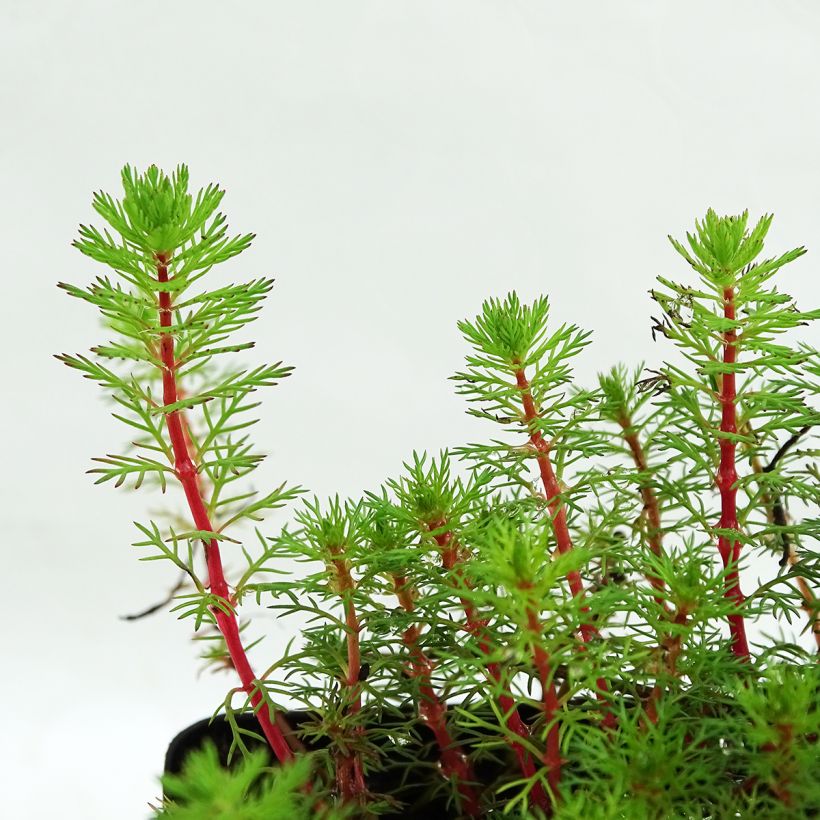

Flowering
Foliage
Plant habit
Botanical data
Myriophyllum
brasiliense
Haloragidaceae
Parrot's Feather, Brazilian Watermilfoil
Australia
Other Aquatic perennials
Planting and care
Planting period
Intended location
Care
-
, onOrder confirmed
Reply from on Promesse de fleurs
Aquatic plants
Haven't found what you were looking for?
Hardiness is the lowest winter temperature a plant can endure without suffering serious damage or even dying. However, hardiness is affected by location (a sheltered area, such as a patio), protection (winter cover) and soil type (hardiness is improved by well-drained soil).

Photo Sharing Terms & Conditions
In order to encourage gardeners to interact and share their experiences, Promesse de fleurs offers various media enabling content to be uploaded onto its Site - in particular via the ‘Photo sharing’ module.
The User agrees to refrain from:
- Posting any content that is illegal, prejudicial, insulting, racist, inciteful to hatred, revisionist, contrary to public decency, that infringes on privacy or on the privacy rights of third parties, in particular the publicity rights of persons and goods, intellectual property rights, or the right to privacy.
- Submitting content on behalf of a third party;
- Impersonate the identity of a third party and/or publish any personal information about a third party;
In general, the User undertakes to refrain from any unethical behaviour.
All Content (in particular text, comments, files, images, photos, videos, creative works, etc.), which may be subject to property or intellectual property rights, image or other private rights, shall remain the property of the User, subject to the limited rights granted by the terms of the licence granted by Promesse de fleurs as stated below. Users are at liberty to publish or not to publish such Content on the Site, notably via the ‘Photo Sharing’ facility, and accept that this Content shall be made public and freely accessible, notably on the Internet.
Users further acknowledge, undertake to have ,and guarantee that they hold all necessary rights and permissions to publish such material on the Site, in particular with regard to the legislation in force pertaining to any privacy, property, intellectual property, image, or contractual rights, or rights of any other nature. By publishing such Content on the Site, Users acknowledge accepting full liability as publishers of the Content within the meaning of the law, and grant Promesse de fleurs, free of charge, an inclusive, worldwide licence for the said Content for the entire duration of its publication, including all reproduction, representation, up/downloading, displaying, performing, transmission, and storage rights.
Users also grant permission for their name to be linked to the Content and accept that this link may not always be made available.
By engaging in posting material, Users consent to their Content becoming automatically accessible on the Internet, in particular on other sites and/or blogs and/or web pages of the Promesse de fleurs site, including in particular social pages and the Promesse de fleurs catalogue.
Users may secure the removal of entrusted content free of charge by issuing a simple request via our contact form.
The flowering period indicated on our website applies to countries and regions located in USDA zone 8 (France, the United Kingdom, Ireland, the Netherlands, etc.)
It will vary according to where you live:
- In zones 9 to 10 (Italy, Spain, Greece, etc.), flowering will occur about 2 to 4 weeks earlier.
- In zones 6 to 7 (Germany, Poland, Slovenia, and lower mountainous regions), flowering will be delayed by 2 to 3 weeks.
- In zone 5 (Central Europe, Scandinavia), blooming will be delayed by 3 to 5 weeks.
In temperate climates, pruning of spring-flowering shrubs (forsythia, spireas, etc.) should be done just after flowering.
Pruning of summer-flowering shrubs (Indian Lilac, Perovskia, etc.) can be done in winter or spring.
In cold regions as well as with frost-sensitive plants, avoid pruning too early when severe frosts may still occur.
The planting period indicated on our website applies to countries and regions located in USDA zone 8 (France, United Kingdom, Ireland, Netherlands).
It will vary according to where you live:
- In Mediterranean zones (Marseille, Madrid, Milan, etc.), autumn and winter are the best planting periods.
- In continental zones (Strasbourg, Munich, Vienna, etc.), delay planting by 2 to 3 weeks in spring and bring it forward by 2 to 4 weeks in autumn.
- In mountainous regions (the Alps, Pyrenees, Carpathians, etc.), it is best to plant in late spring (May-June) or late summer (August-September).
The harvesting period indicated on our website applies to countries and regions in USDA zone 8 (France, England, Ireland, the Netherlands).
In colder areas (Scandinavia, Poland, Austria...) fruit and vegetable harvests are likely to be delayed by 3-4 weeks.
In warmer areas (Italy, Spain, Greece, etc.), harvesting will probably take place earlier, depending on weather conditions.
The sowing periods indicated on our website apply to countries and regions within USDA Zone 8 (France, UK, Ireland, Netherlands).
In colder areas (Scandinavia, Poland, Austria...), delay any outdoor sowing by 3-4 weeks, or sow under glass.
In warmer climes (Italy, Spain, Greece, etc.), bring outdoor sowing forward by a few weeks.

































